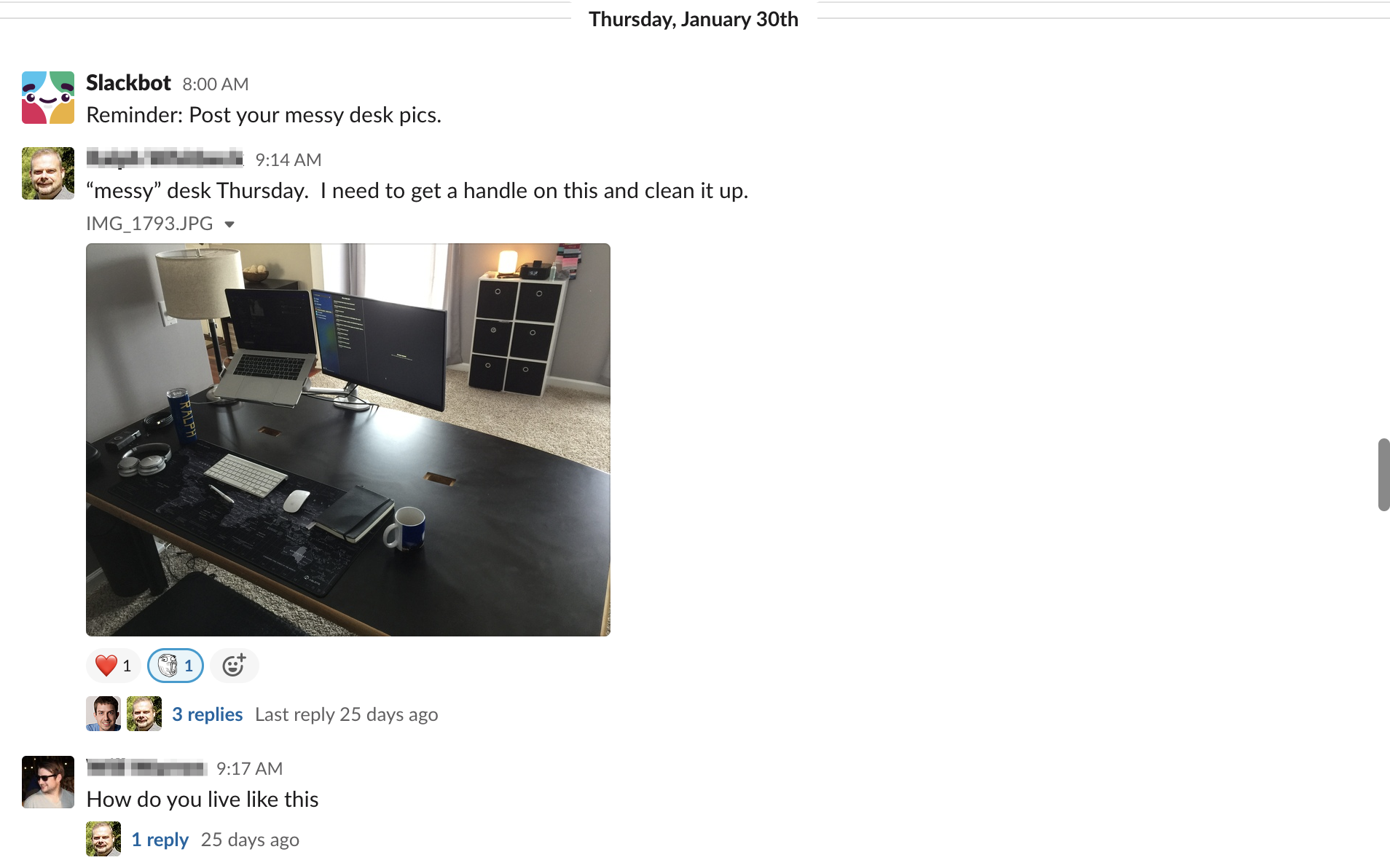5-second summary
- Hectic schedules abound, and remote/hybrid work is here to stay. It’s more important than ever to set aside time and make the effort to build connections, relationships, and trust among team members. It not only helps people feel good, but is also proven to improve performance and profitability.
- There are several common characteristics of the most effective teams – many of which are enhanced by team building.
- Explore these 20 five-minute team-building activities you can do virtually or in person with limited time and preparation.
Some people view team building as a critical component of successful collaboration. Others see it as cringey – likely because they haven’t experienced it in an effective way. When done right, team building can be powerful on multiple levels, from the front lines to the bottom line. In fact, Gallup research shows that team building can be a catalyst for better performance, lower absenteeism, and higher profitability.
Team building can be a challenge, especially when your group is short on time, distributed, or unfamiliar with each other. But with these simple exercises and activities, you can bring people together to help everyone work better as a team, achieve better results, and enjoy the journey along the way.
The 10 Cs of effective teams
Research and thought leadership around group dynamics have surfaced a handful of common traits of the most effective teams. When you’re planning group exercises – whether it’s an icebreaker or a staff retreat – keep these characteristics in mind as the North Stars of team building strategy.
- Clear expectations: Everyone on the team fully understands their mission, goals, roles, and responsibilities.
- Commitment: Team members are committed to contributing what it takes to accomplish their mission and goals.
- Competence: The team has the knowledge, skills, and capabilities to fulfill their responsibilities and accomplish their mission and goals.
- Collaboration: The whole team is bought into the processes and group norms needed to work well together.
- Communication: Team members have all the information needed to effectively complete their tasks, and they provide honest, timely feedback to each other in a respectful, empathetic way.
- Creativity: The team values, encourages, and rewards innovative thinking, unique solutions, and new ideas.
- Conflict: Team members feel safe to express their true feelings and work together to resolve conflict.
- Conditions: The team has access to the necessary processes, policies, incentives, environment, and resources to be successful.
- Cohesion: Team members like being on the team, trust each other, and willingly work as a unit.
- Continuous improvement: Each team member consistently takes steps to become more capable and efficient at their job
Try one of the five-minute team building exercises below to set your team on the right path, before you even finish your cup of coffee.
20 virtual-friendly team building activities you can do in 5 minutes or less
1. Blow your trumpet 🎺
It can feel awkward – sometimes downright painful – to brag about ourselves, so this activity is a great opportunity to venture outside that comfort zone in a safe space, learn more about our teammates, and celebrate each other’s accomplishments. To play, simply ask each person to share one of their proudest achievements and why it’s meaningful to them.
2. Birth map 📍
Knowing where someone comes from can help others understand them and their journey to where they are today. For this activity, have the meeting host or facilitator show a map of the world on their screen or in the conference room, and add pins to the map as each team member shares where they were born.
At the end, zoom out to see all the pins at once. You could also ask follow-up questions that get the group talking, such as, “What do you notice about the pins?” and “Did anyone’s birth place surprise you?”
If you have a small team or want a variation on this activity, each person can share the cities where they’ve lived. Larger teams can populate the map before the meeting, and dive right into discussion mode when the exercise commences.
3. Baby pictures 📷
Whether it’s cute or embarrassing (it’s probably both), sharing childhood pictures is a lighthearted way to learn more about your team’s upbringing.
Before the meeting, ask everyone to send a photo of themselves as a baby. (The sillier, the better!) Then, show each picture to the group during the activity to see if they can guess who it is.
4. Messy desk photo share 🗑️
This one is perfect for virtual teams. In an office, people tend keep their desks reasonably organized. But when you work remotely, all bets are off. Are your co-workers clean freaks? Cup collectors? Peppered with Post-it Notes? Surrounded by trinkets?
Let the team know the activity ahead of time in case they want to do some proactive tidying or remove anything super personal. Then, have each person send a picture of their workstation. Colleagues can comment with emojis, ask questions, and let the hilarity ensue.

For variations of this activity, the team could also gather pictures of other (suitable-for-work) areas of their house that offer a glimpse into their personality and encourage conversation – think junk drawer, closet, or bookshelf.
5. Virtual office tour 🖥️
We’re all familiar with our colleagues’ Zoom backgrounds, but what else is in their home office? Another variation of the messy desk photo contest helps you get the full picture: the virtual office tour. Give each person 30 seconds to turn their laptop or camera around and give the group a tour of their home office, pointing out interesting or special items along the way and talking through the process of decorating (or lack thereof).
6. Pantry pop quiz 🥫
Piggybacking off the messy desk/office tour exercises, it’s also fun and enlightening to see co-workers’ favorite foods. Rather than peering over the cubicle or table to see what they packed for lunch, remote and in-person team members can take a peek at each other’s kitchens. Who’s got the best snack game? Whose fridge houses a bottle of ketchup…and not much else? Whose pantry organization skills would make Marie Kondo proud? Feast your eyes and find out.
Have each person send a photo of their fridge or pantry to the activity facilitator ahead of time. Then, the group can guess who each picture belongs to. Bonus points if you bond over shared favorites or discover new food ideas along the way.
7. Collaborative karaoke 🎤
Music brings people together. Ask each person to name their go-to karaoke pick (and maybe sing a bar of it if they’re feeling brave!) and why they chose it.
As a follow-up, you could make a Spotify playlist of the group’s karaoke picks and share it with the team.
8. Emoji mood board 😄
Whenever we ask each other, “How are you?” the default answer is probably a nonchalant “Good!” or “Fine.” But how are your co-workers really feeling? What can the group do to celebrate their happy moments and support them through struggles?
A picture’s worth a thousand “Fines,” so ask your team to choose 3-5 emojis that summarize how they’re feeling. Then, everyone can share their picks and whatever explanation they feel comfortable with. It’s a lighthearted way to encourage vulnerability between teammates.
9. Time capsule ⏳
Remember how much fun it was to make a time capsule as a kid? Let’s bring it back and learn more about our teammates’ journeys to where they are now!
Ask each person to gather up items – between one and five, depending on the size of your team – from around their home that represent important memories of milestones in their lives: a cherished stuffed animal or blanket from childhood, pictures of loved ones or big occasions, souvenirs from special trips, artifacts from their favorite hobbies, or something totally random yet meaningful. As they share items in their time capsules, ask each one to say a few words about what it is and why it’s special to them.
10. Show and tell 💁🏻♀️
For an even easier, more remote-friendly alternative to the time capsule, ask each person to grab something within arm’s reach that is meaningful to them (or just has a funny story behind it), and go around the “room” for a quick game of show and tell.
11. Annual highlights 🗓️
For a more recent variation of the time capsule that could work for virtual or in-person teams, try revisiting each person’s most significant memories from the past year.
This activity is easily scalable depending on the number of participants and the amount of time you have. For big teams and/or short time periods, have each person name just a highlight or two from the past year. For small groups or meetings where you have more time, team members can share more highlights (or lowlights, if they’re feeling comfortable and open) with more detailed descriptions.
Start the exercise by letting the group know that each memory doesn’t have to be overwhelmingly positive. We’re all human, and sharing the tough times can be just as powerful, if not moreso, as sharing the good ones.
12. 6-word memoir ✍🏼
In this game, each team member takes a minute or two to come up with six words that summarize their life, then shares their “memoir” with the group. Their choices could be six random words or a six-word title – whatever feels right.
13. Bucket list 🪣
It’s easy to get run down by our daily routines and lose sight of big dreams. Take a step back and re-focus on the bigger picture with this future-looking exercise.
Team members can share three or four items on their personal “bucket list” that they want to do or achieve in life. They could be silly, serious, or anywhere in between; realistic or pie-in-the-sky.
14. Purse or wallet tour 👜
Here’s another one offering a peek into your teammates’ personality and interests: the purse or wallet tour. Do your colleagues have oodles of cards or only a select few? Punch cards, family photos, receipts, gum wrappers? A Mary Poppins-esque tote with everything they could possibly need, or a slim and sleek, all-in-one wallet? Get a snapshot of the items they use, the places they frequent, and maybe a few fun facts or quirks you didn’t know before.
15. Would you rather? ⚖️
For a quick and easy team-building exercise that helps people get to know each other, try “Would you rather?” In this game, the facilitator picks a number of (safe-for-work!) scenarios, situations, or preferences. that each person has to choose between.
Start simple, and get sillier for a good laugh. Would you rather adopt a cat or dog? On Thanksgiving morning, would you rather relax or run a 5k? Would you rather go into an executive meeting with spinach in your teeth or toilet paper stuck to your shoe? Each person can either hold up a piece of paper with their answer or type it into the virtual meeting chat to spark emoji reactions and a healthy debate.
16. The GIF that keeps on giving 🎁
This activity is particularly fun for remote teams that use a group messaging tool like Slack. Provide the group with prompts, and ask them to find a GIF that summarizes their reaction to it. For example:
- When someone books a meeting with you at 4 p.m. on a Friday
- When you finally launch a big project you’ve been working on
- When you realize your fly was down during your in-person presentation
- When you stayed up too late watching Netflix on a work night
For those who aren’t as GIF-savvy, give them some tips on how to find, copy, and paste GIFs (such as Googling “[emotion] gif” or searching on a site like giphy.com or tenor.com).
17. Craft challenge 🧶
Which teammates tend towards the creative, and which are more left-brained? How resourceful are they when facing constraints? This activity challenges everyone to think outside the box. Give the group five minutes to build a specific object using a handful of items that you supply or random supplies of their choice from around the house.
For example, can they build a rocket ship using marshmallows, spaghetti, and Cheerios? An office building using only items from their desk or pantry? The options are endless – and the results hilarious, if not always impressive.
18. E-mov-ji 🎬
Another fun exercise using emojis is to describe or spell out each person’s favorite movie.
Remote teams can share their emojis in a group chat, and in-person teams could draw their emojis on paper (another fun test of their creativity).
Alternatively, you could nominate a team member to create a list of pre-populated emoji movie titles ahead of time, and the group can guess each one, pop quiz-style.
19. Lightening scavenger hunt ⚡️
This game requires quick thinking (and movement) but can have funny and, ahem, enlightening results. Before the meeting, create a list of prompts with items to find around their house in, say, a minute or less. Ideas include:
- An ingredient from your favorite breakfast
- The last book you read
- A pet or a picture of your favorite animal
- An item you can’t live without
- The oldest piece of clothing you own
If you have time, each person can say a few words about their items for more insight into their life.
20. Name 🔟 things
A popular improv game, Name Ten Things is a fast way to get to know each other and get the creativity flowing.
First, let the group know that there are no wrong answers, and this game is all about speed and saying whatever comes to mind first (while keeping it work-appropriate, of course). Start with one person, and give them a prompt to name 10 answers about a certain topic. It could be anything: a straightforward topic like their top ten vacation destinations, a creative prompt like coming up with ten names for a new dog, or a silly question like brainstorming ten of the worst first date locations.
Once that person finishes, they nominate the next person and give them a prompt. Repeat until everyone has taken a turn.
Working together while you’re apart
With hectic schedules and remote/hybrid work here to stay, it’s vital to connect with our co-workers just like we would if we were sitting next to each other every day. By making time and putting in a bit of effort to plan these simple, 5-minute team-building exercises, you can help your group build meaningful relationships with each other that contribute to happier employees and healthier teams.
More ideas
Grab a list of 20+ icebreaker questions and easy activities in the Atlassian Team Playbook – a free online resource of simple, science-backed workshops that helps teams build on their strengths, troubleshoot difficulties, and encourage positive team dynamics.













































